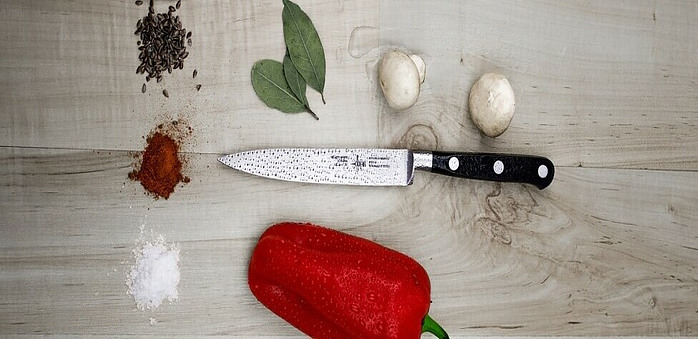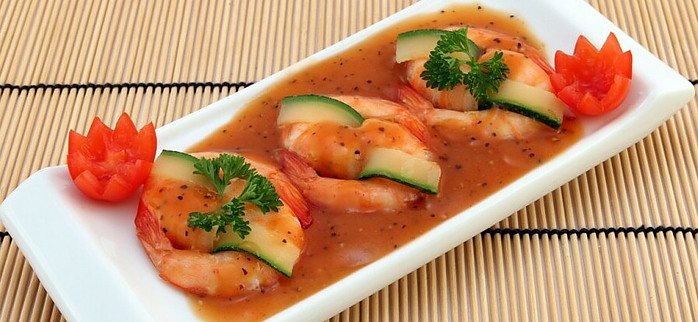 When you start developing your culinary skills, the first thing to grasp is the spectrum of basic tastes. Much like an artist mixes colors on a palette, a chef combines flavors to create a dish that resonates.
When you start developing your culinary skills, the first thing to grasp is the spectrum of basic tastes. Much like an artist mixes colors on a palette, a chef combines flavors to create a dish that resonates.
Sweet, salty, sour, bitter, and umami make up these fundamental building blocks. Each one plays a unique role in how we experience food. Sweetness can add comfort and richness, while salty flavors enhance and enliven other taste notes. Sourness injects a level of freshness and zest, bitterness can add depth and balance, and umami offers a savory fullness that rounds out a meal.
Harmonizing these tastes is crucial to achieving balance in your cooking. For example, if a dish feels overwhelmingly sweet, introducing an element of sour or bitter can tone it down. If a meal lacks punch, a hint of salt can lift the dish to new heights.
Here are a few simple tips to get you started. Taste as you go and be mindful of the flavor balance. Remember, the goal is not to have all tastes in each bite, but to create a harmonious blend across the entire meal.
In the next section, we delve into commonly celebrated flavor affinities, providing a canvas on which you can begin to paint your culinary masterpieces with confidence. Let’s uncover time-tested combinations that can serve as your starting point.
Time-Tested Flavor Affinities
Some flavors are just MEANT to be together. They’ve stood the test of time, gracing countless dishes across various cuisines with their impeccable harmony. It’s all about the way flavors interact on our taste buds, creating a balance that can elevate a meal from good to unforgettable.
Consider the classic combination of sweet and savory – a duo that sings in harmony in dishes like maple-glazed bacon or teriyaki chicken. Then there’s the irresistible salty-sweet dance found in caramel popcorn or chocolate-covered pretzels, hitting all the right notes to satiate our complex taste desires.
And let’s not overlook the fresh zing that sour brings to sweet. It’s the essence behind a lemon meringue pie or tangy raspberry vinaigrette dressing on a summer salad. These pairings work because they balance each other’s intensity, ensuring that no single taste overwhelms the palate.
Below, I’ll introduce you to the most celebrated flavor pairings, advising on how you might use these combinations to bring out the BEST in your home-cooked meals. But remember, this is just the beginning. As you grow more confident in the kitchen, you’ll learn how to tweak these affinities to suit your personal palette.
Crafting with Herbs and Spices
 Walking into a spice shop is like entering a world of culinary possibility. Each jar holds a potential key to transforming a mundane dish into something memorable. The difference between a good meal and a great one often lies in the herbs and spices you choose. Getting to know common combinations can be your secret weapon in the kitchen.
Walking into a spice shop is like entering a world of culinary possibility. Each jar holds a potential key to transforming a mundane dish into something memorable. The difference between a good meal and a great one often lies in the herbs and spices you choose. Getting to know common combinations can be your secret weapon in the kitchen.
Take the classic duo of basil and tomato. It’s not just pizzas and pastas that benefit from this fragrant mix; they can bring a fresh, summery vibe to a variety of dishes. Meanwhile, rosemary, with its forest-like aroma, pairs delightfully well with garlic, lifting meats and potatoes to a new level of savory goodness.
Cumin and coriander, often found in Middle Eastern, Indian, and Latin American cuisines, come together to deliver a warm, earthy undertone with a zesty kick. It’s crucial, however, to consider the form of these spices. Fresh herbs can bring a sheer vibrancy that’s best added towards the end of cooking, while dried herbs often pack a more concentrated punch and are suited for longer simmering times.
But there’s more to crafting with herbs and spices than following traditional rules. It’s about understanding how their characteristics—such as the cooling effect of mint or the spicy heat of ginger—affect the overall profile of your dish. It’s also about how you use them. Toasting spices can unlock deeper flavors, and crushing herbs can release more aromatic oils.
Now, as you ponder the vast array of potential herb and spice combinations, don’t forget about texture. It’s not just taste that titillates the senses; the physical experience of eating plays a major role in how we enjoy food. Moving to the next section, you’ll discover how combining different textures can transform the act of eating into a truly memorable experience.
Texture Talk: A Symphony of Sensations
Imagine biting into a dish and experiencing a delightful crunch that gives way to velvety smoothness. That’s the magic of contrasting textures. In culinary terms, texture refers to the physical sensation a food imparts in the mouth. It’s those crispy, creamy, flaky, or chewy experiences that can turn a good dish into a great one.
It’s not just about taste; how food feels can be as crucial as how it tastes. Think about the contrast in a classic caprese salad, where the juiciness of ripe tomatoes beautifully complements the firm, yet yielding, texture of fresh mozzarella. Or consider the satisfying crunch of nuts in a rich, gooey brownie. These contrasts ensure that every bite is a little adventure in itself, keeping your palate engaged and excited.
When planning a meal, pay attention to the texture as much as the flavor. A silky soup might benefit from a sprinkle of croutons, or a smooth pudding can be wonderfully offset by a crunchy biscuit topping. These textural elements not only contribute to the enjoyment of the dish but also highlight the main ingredient’s own texture and taste.
Striving for textural variety is a straightforward way to create a more dynamic dining experience. Take a simple grilled chicken breast: it’s transformed when paired with a crispy salad or topped with a crust of herbs and breadcrumbs. Such combinations not only create a sensory pleasure but also bring visual appeal to the plate, making your dishes as beautiful as they are delightful to eat.
A thoughtfully constructed dish with varied textures can be the difference between a meal that’s simply consumed and one that’s truly savored. And as you foster an awareness of texture in your cooking, you prime your palate for exploring the world of flavors more deeply, which is what I’ll discuss next in the journey through regional and cultural flavor pairings.
Around the World in Flavorful Pairings
 A culinary adventure awaits in your own kitchen when you explore the time-honored flavor pairings from cultures across the globe. Each culture brings a palette of tastes and combinations that speak to their unique traditions and available resources. From the zesty and spicy notes of Mexican cuisine to the fragrant and bold flavors of Indian dishes, understanding these pairings can transport your taste buds and elevate your dishes with authentic flair.
A culinary adventure awaits in your own kitchen when you explore the time-honored flavor pairings from cultures across the globe. Each culture brings a palette of tastes and combinations that speak to their unique traditions and available resources. From the zesty and spicy notes of Mexican cuisine to the fragrant and bold flavors of Indian dishes, understanding these pairings can transport your taste buds and elevate your dishes with authentic flair.
Take for example the Italian staples of basil and tomato. Together, they create a simple yet unmistakably Italian taste that serves as the backbone of many dishes. In Thailand, lemongrass and coconut milk blend to create a harmonious duo that imparts a sweet and tangy profile, perfect for curries and soups. While in Japan, the combination of soy sauce and wasabi offers an umami-rich and piquant contrast that defines much of the cuisine’s appeal.
By incorporating these traditional combinations into your cooking, you’re not just adding flavors; you’re incorporating centuries of culinary history into your meal. It’s essential to respect the proportions and preparation methods traditional to each culture to maintain authenticity. However, feel free to adapt these pairings to suit your taste and the availability of ingredients. The kitchen is your canvas; use these worldly flavors to paint a picture that’s both delicious and culturally rich.
Next, I’ll talk about the critical role acidity plays in cooking and how mastering it can transform your dishes from good to great. Acid enhances dishes by cutting through richness, adding a bright note to balance sweetness, or tenderizing ingredients to perfection. I’ll introduce the simple ways to incorporate acidity and how it can shape the sensory experience of a meal.
The Balancing Act: Mastering Acidity in Dishes
Acidity is a crucial component in cooking that can transform a flat tasting dish into a mouthwatering creation. When I think about acidity, I consider its essential role in cutting through the richness, balancing sweetness, and adding a dimension of brightness that can elevate a dish from good to great.
I often reach for citrus fruits like lemons, limes, or oranges, not only for their juice but also their zest, which adds a fragrant element to dishes. Vinegars, too, are my go-to ingredients when I want to inject liveliness into my salads or marinades. And let’s not forget about fermented ingredients such as yogurt, kimchi, or sauerkraut, which provide a double hit of tang and probiotic goodness.
When balancing acidity, I pay close attention to the ingredient list of my recipe. A splash of acid can rescue a too-heavy sauce or perk up a dulled soup. However, it’s not just about randomly adding vinegar or lemon juice; it’s about understanding the component that will best complement the flavors already at play. For instance, apple cider vinegar might be perfect in a sweet autumnal squash soup, while rice vinegar works wonders in an Asian-inspired stir-fry.
Now, the key to getting acidity just right is to add it incrementally. I taste as I go because it’s much easier to add more than to correct for too much. Just a bit at a time, I look for that moment when everything on the palate comes into sharp focus. A well-balanced dish has a satisfying depth of flavor, with none of its components overpowering the others.
Harmonizing Flavors with Wines and Beverages
 When you bite into a perfectly seasoned dish and sip a complementary wine, it’s more than just eating and drinking; it’s an experience. But don’t just take my word for it – give it a try. Pairing food with the right wine or beverage can elevate a great meal to an extraordinary one. You don’t have to be a sommelier; start with basic pairing principles. For instance, match the weight of the food and wine – heavy dishes go well with full-bodied wines, while light meals pair nicely with lighter wines.
When you bite into a perfectly seasoned dish and sip a complementary wine, it’s more than just eating and drinking; it’s an experience. But don’t just take my word for it – give it a try. Pairing food with the right wine or beverage can elevate a great meal to an extraordinary one. You don’t have to be a sommelier; start with basic pairing principles. For instance, match the weight of the food and wine – heavy dishes go well with full-bodied wines, while light meals pair nicely with lighter wines.
Let’s not forget about non-alcoholic options. A well-chosen mocktail, tea, or even craft soda can bring out the subtleties in a dish just as effectively as wine. Consider the dominant flavors of your meal and choose a drink with complementary notes. A spicy curry might pair beautifully with a refreshing mango lassi, for example.
Cuisines also come into play. For an Italian pasta dish, why not a glass of Sangiovese? A citrusy Sauvignon Blanc, however, can be the perfect match for a zesty fish taco. It’s about harmony – the drink should neither overpower the food nor be lost in its flavors. A bit of research on regional beverages and their traditional food pairings can lead to delightful discoveries.
Section 8: Seasonal Pairings: Nature’s Flavor Guide
Embracing the natural rhythm of the seasons not only roots us in the moment but also optimizes the flavors on our plate. I invite you to consider the rich array of produce each season brings and how these ingredients naturally complement each other.
Why focus on seasonal pairing? Simply put, produce that’s picked during its peak season is fresher, tastier, and more nutritious. When you pair these ingredients, their flavors coalesce into a harmonious dish that reflects the very essence of that season.
In spring, the earth awakens with tender greens, peas, and asparagus. Pair them with fresh herbs like chives or tarragon for dishes that taste like a breath of fresh air. Think of a delicate pea risotto garnished with mint – an embodiment of spring on a plate.
Come summer, tomatoes, corn, and berries burst onto the scene. I suggest coupling juicy tomatoes with basil, or blending sweet corn with aromatic thyme. Summer salads topped with ripe berries and a drizzle of balsamic vinegar can be simple yet profoundly flavorful.
Autumn offers a tapestry of rich flavors: squash, apples, and root vegetables. A warm butternut squash soup with a sprinkling of nutmeg, or roasted carrots with a touch of honey and rosemary, captures the comfort of fall.
In the winter, hearty dishes take center stage. Root vegetables like potatoes and beets pair well with robust flavors like sage and juniper. Also, citrus fruits, in season during winter, are perfect for cutting through the richness with a burst of freshness.
For each season, fresh, local produce will not only taste better but often costs less and supports local economies. Plus, using seasonal ingredients reduces your carbon footprint, as out-of-season produce typically requires more resources to grow and transport.
Now, as you’ve learned to match the natural ebb and flow of seasonal produce, the next section invites you to unfold the canvas of your culinary creativity. In the final section, I’ll show you how experimentation and an open mind can lead to the discovery of inventive and delightful new flavor combinations.
Embracing the Adventure of Taste: Conclusion
 You’ve come a long way in understanding the fundamentals of flavor pairing. Armed with knowledge about basic tastes, texture contrasts, and the significance of herbs and spices, you are now ready to infuse your cooking with depth and excitement. You’ve learned about the cultural roots of traditional pairings and how to orchestrate the vibrant dance of acidity in your dishes.
You’ve come a long way in understanding the fundamentals of flavor pairing. Armed with knowledge about basic tastes, texture contrasts, and the significance of herbs and spices, you are now ready to infuse your cooking with depth and excitement. You’ve learned about the cultural roots of traditional pairings and how to orchestrate the vibrant dance of acidity in your dishes.
A key takeaway is the dynamic relationship between food and drink, particularly wine, which when paired thoughtfully, elevates the dining experience to new heights. Considering the rhythms of the seasons has shown you how nature’s offerings can guide your flavor pairings, serving dishes that are both timely and tantalizing.
Yet, this journey doesn’t end here, as culinary exploration is an ongoing adventure. Your courage to experiment and stretch the boundaries of conventional flavor combinations can lead to delightful discoveries. Remember, there are no mistakes here, only lessons to be savored.
Most importantly, through mindful pairing for health, you’ve seen how flavor can ally with nutrition to create meals that not only please the palate but also nourish the body. By making wise choices, you can support your well-being while still enjoying the rich tapestry of tastes.
As you continue to explore and evolve in your culinary endeavors, trust in the instincts you’ve sharpened and the knowledge you’ve accumulated. May every meal be an opportunity to celebrate the joy of eating and the art of combining flavors. Bon appétit!

Hi Rod,
Hey, what a delicious read! As a beginner in the culinary world, finding a guide that breaks down the art of combining flavors in such an accessible and engaging way is like stumbling upon a secret cookbook. Your ability to make complex flavor profiles understandable for us culinary novices is truly commendable. The section on balancing the five basic tastes was particularly enlightening, kind of like finding the perfect spice blend that you never knew you needed!
Speaking of spice, I’m intrigued: Do you have any unexpected or unconventional flavor pairings that you’ve discovered in your culinary adventures? Something that may raise an eyebrow but delights the taste buds?
Thanks for this flavorful journey into the world of gastronomy. Your work is a real treat!
Warm regards,
Makhsud
Hi Makhsud,
Thank you for the delightful review. Flavor pairing can certainly be an adventure. That is where the fun begins. To answer your question, I have personally delighted in a bacon and chocolate combination (sweet and salty) that may not raise the eyebrow, but it does delight the taste buds.
Now a combination that many may not think to make is blue cheese and honey. The strong and tangy flavor of blue cheese is beautifully balanced with the sweetness of honey, creating a harmonious blend of tastes.
The real enjoyment comes from taking what you have in your kitchen and combining flavors until you find that one magical bite. Then take that bite and see if you can find a different texture to add a layer of flavor.
Just have fun,
Rod
May need to flag this page. Developing a sense for how different foods and beverages pair together has always been on my bucket list (outside of the classic pairings we all know and love). It’s amazing that so many different complex pairings can be created with just a handful of basic “ground rules”. It’s a good thing – keeps life interesting and flavorful.
Hi Ben,
I agree keeping life flavorful with food is an amazing way to experience life.
Rod
Wow my mouth is salivating right now. You sure do know your stuff with cooking and deserts. I mean I have never seen anybody so smart with cooking. I am kind of getting into cooking these days because I quit drinking and smoking pot so now I’m bored and this is inspiring me to start getting into this thanks 👍
Hey Jake, I am always trying to learn more about the culinary arts. Sometimes it is just food and sometimes, if done right, it is the stuff life is built around. Just my philosophy, but one that has served me well. I am glad you are getting into it. I do not believe you will be disappointed.
You are most welcome,
Rod
Wow, this article provides such a comprehensive guide to flavor pairing! I love how it starts by breaking down the basic tastes and their roles in creating a harmonious dish. The tips for balancing flavors are practical and insightful, especially the advice on introducing elements like sour or bitter to tone down sweetness
I’m curious to know from the author: What’s your favorite unconventional flavor pairing that you’ve discovered through experimentation? And do you have any tips for beginners who are just starting to explore the world of flavor pairing in their cooking journey?
Hi Lizzy. I am glad you found the article insightful and pratical. To answer your question, an unconventional flavor pairing would be kiwi and blue cheese. I know, it doesn’t seem that they would even go togetther, but it really is a flavor sensation.
As far as any tips for a beginner I would suggest looking to make sweet and savoury or sweet and sour combinations to start. Also try mixing textures like crunchy (toast) and creamy (cream cheese) or crispy (bacon) and liquid (maple syrup). The best tip I can give though, is to experiment and just have fun. Cooking is as much about exploration as it is about learing techniques.
Rod
Hi there,
What a great article, I really enjoyed the reading! I love cooking, but I am not good at pairing flavors, which is one of the most important factors to consider when wanting to have a delicious meal:) I do have a question, though. There are so many cooking specialties and dishes from all over the world. For example French food is completely different than Mexican food. How would you pair all these flavors? I mean, I don’t think there is only one basic pairing technique. Sorry, English is not my first language, so I hope it is clear enough for you to understand what I am trying to say:)
Hi Daniella, I am happy you enjoyed the article. The fact that you love cooking is going to take you long way in the culinary arts. I hope I can answer your question satisfactory. The way a culture cooks has a lot more to do with the ingredients available and the culture itself. German cuisine is completly different than French is completely different than Asian. The thing they all have in common is that they all share the sams basic tastes: sweet, salty, sour, bitter, and umami.
There is not one pairing technique although some flavors go together natually, such as tomato and basil. Learning how to pair flavors just has to do with expermenting and having fun. When you find something you like, write it down and start exploring how to incorporate into some dishes. I hope this helps.
Rod